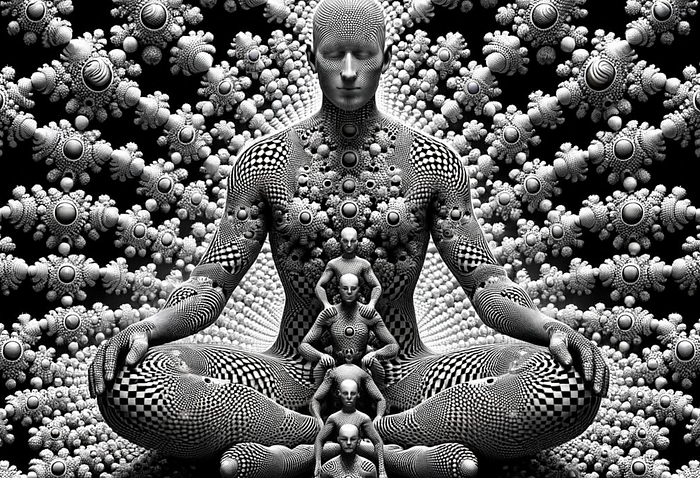Everett’s Wave Function of the World Explained by John Bell

Here I quote the explanation of Hugh Everett’s many worlds interpretation of quantum mechanics given by John Bell.
Given that Bell’s inequality proving the existence of nonlocal entanglement was experimentally validated many times and that authors of three such validations were awarded Nobel prizes only a couple of years ago, I believe that Bell deeply understood what he was writing about. It’s especially valuable that he expressed his thoughts in wording that was as much as possible close to human natural language.
I think that this explanation gives a minimal but complete quantum mechanical description of an artificial agent creating and updating its model of the world. Enjoy:
“Everett was complacent neither about gravitation nor quantum theory. As a preliminary of the synthesis of the two he sought to interpret the notion of a wave function for the world. This world certainly contains instruments that can detect, and record macroscopically, microscopic and other phenomena. Let A be the recording part, or ‘memory’, of such a device, or a collection of such devices, and let B be the rest of the world. Let the coordinates of A be denoted as a, and B by b. Let
be a complete set of states for A. Then one can expand the world wave function
at some time t in terms of the
:
We will refer to the norm
As the weight of
in the expansion. As an example A might be a photographic plate that can record the passage of an ionizing particle in a pattern of blackened spots. The different patterns of blackening correspond to different states of
. Then it can be shown along lines laid down long ago by Mott and Heisenberg, that the only states of
with appreciable weight are those in which the blackened spots form essentially a linear sequence, in which the blackening of neighboring plates, or of different parts of the same plate, are consistent with one another, and so on. In the same way Everett, allowing A to be a more complicated memory, such as that of a computer (or even a human being), or a collection of such memories, shows that only those states
have appreciable weight in which the memories agree on a more or less coherent story of the kind we have experience of. All of this is neither new nor controversial. The novelty is in the emphasis of memory contents as the essential material of physics and in the interpretation which Everett proceeds to impose on the expansion E.
An exponent of the traditional view, if he allowed himself to contemplate a wave function of the world, would probably say the following. Once a macroscopic record is formed we are concerned with fact rather than possibility, and the wave function must be adjusted to take account of this. So from time to time the wave function is ‘reduced’
Where (N being the renormalization factor) the restricted summation
is over a group of states
which are ‘macroscopically indistinguishable’. The complete set of states is divided into many such groups, and the reduction to a particular group occurs with probability proportional to its total weight
He will not be able to say just when and how often this reduction should be made, but would be able to show by analyzing examples that the ambiguity is quantitatively unimportant in practice. Everett disposes of this vaguely defined suspension of the linear Schrödinger equation with the following bold proposal: it is just an illusion that the physical world makes a particular choice among the many macroscopic possibilities contained in the expansion; they are all realized and no reduction of the wave function occurs. He seems to envisage the world as a multiplicity of ‘branch’ worlds, one corresponding to each
term in the expansion. Each observer has representatives in many branches, but the representative in any particular branch is aware only of the corresponding particular memory state
. So he will remember a more or less continuous sequence of past ‘events’, just as if he were living in a more or less well defined single branch world, and have no awareness of other branches. Everett actually goes farther than this, and tries to associate each particular branch at the present time with some particular branch in any past time in a tree-like structure, in such a way that each representative of an observer has actually lived through the particular past that he remembers. In my opinion this attempt does not succeed and is in any case against the spirit of Everett’s on memory contents as the important thing. We have no access to the past but only to present memories. A present memory of a correct experiment having been performed should be associated with a present memory of a correct result having been obtained. If physical theory can account for such correlations in present memories it has done enough — at least in the spirit of Everett.”
Bell, John S. The measurement theory of Everett and de Broglie’s pilot wave. In: Speakable and Unspeakable in Quantum Mechanics: Collected Papers on Quantum Philosophy. 2nd ed. Cambridge: Cambridge University Press; 2004:93–99. doi:10.1017/CBO9780511815676.013, pages 94–96
